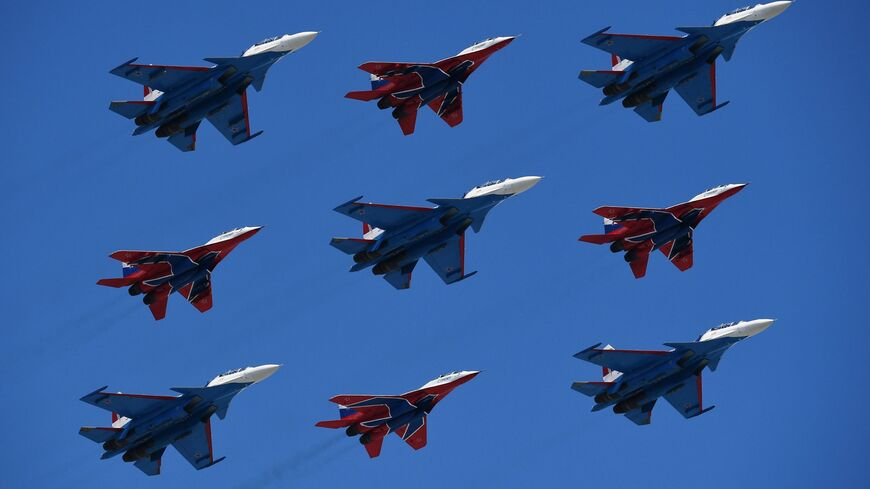
CENTCOM commander Michael “Erik” Kurilla told Congress about ongoing ‘aggressive’ behavior by Russian pilots, following the downing of a US MQ-9 drone over the Black Sea.
Russian combat pilots have been flying weapons-laden attack aircraft over US bases in Syria with increasing frequency over the past several weeks, in what Pentagon officials suspect is part of a wider pattern of deliberate provocation.
“They fly over our bases with ground attack-aircraft with weapons on them in an attempt to try to be provocative,” the top commander of US forces in the Middle East, Army Gen. Michael “Erik” Kurilla, told Senate lawmakers on Thursday.
Kurilla called the interactions “unsafe, unprofessional, and not what we expect of a professional air force.”
“They want to try and renegotiate the deconfliction protocols that they violate every day,” he said.
The general, responding to a question posed by Sen. Deb Fischer (R-Neb.) during a Congressional hearing, said the overflights aren’t new, but that his headquarters has seen “a significant spike” in Russian pilots’ use of the tactic since about March 1.
The CENTCOM commander’s testimony came just two days after a Russian Su-27 fighter aircraft collided with a US Air Force MQ-9 drone over the Black Sea, causing the unmanned device to crash off the coast of Crimea.
The Pentagon’s top general, Chairman of the Joint Chiefs of Staff Mark Milley, told reporters on Wednesday that officials do not know whether the mid-air collision was deliberate, but that the interception was “part of a pattern” of “aggressive behavior” by Russian pilots towards US and allied aircraft in other parts of the world.
“There is a pattern of behavior recently where there is a little bit more aggressive action being conducted by the Russians. We haven’t completed our analysis as to why that’s happening,” Milley told reporters.
Both Milley and Defense Secretary Lloyd Austin called their Russian counterparts this week in part to determine Moscow’s intent. Defense chief Austin affirmed on Wednesday the US would continue to operate unmanned drones over the Black Sea and “wherever international law allows.”
“Incidents happen. And clearly, we do not seek armed conflict with Russia,” Milley said.
The recent uptick in close encounters with Russian pilots in Syria follows a lull in such incidents in December and January, which came after a more moderate increase late last year, defense officials said.
Last week, the deputy commander of all American forces in the Middle East, US Air Force Lt. Gen. Alexus Grynkewich, told reporters that the Russian aircraft often fly in pairs — one ground-attack aircraft, such as an Su-24 or Su-34, accompanied by an air fighter, such as an Su-35.
“We’re intercepting them, we’re shadowing them, and ensuring that they’re not putting our forces at risk on the ground,” Grynkewich said, adding that the Russian aircraft “are not just passing through.”
“They fly into the airspace that is nominally, under the deconfliction protocols, supposed to be where we are primarily operating and the Russians are not,” he explained.
The overflights have repeatedly led US military officials to call their Russian counterparts in Syria via a shared deconfliction phone line, a process designed to reduce the risk of hostile run-ins between the two military powers.
“They’ll counter-protest and lodge complaints against us at the same time,” Grynkewich said last week.
The CENTCOM deputy also expressed concern over Russian forces sending reconnaissance aircraft, mostly unmanned drones, near US positions in Syria.
“‘Why are you collecting [intelligence] on us? We’re all here to fight ISIS. Why aren’t you collecting on ISIS?’ is usually our message back to them,” Grynkewich told reporters, adding that he was concerned the Russians could be spying on US positions with the intent of “potentially building up for a battle.”
The general, who serves as the top US Air Force chief in the Middle East, reiterated last week that he has grown increasingly wary of the potential for Russian and Iranian military officials in Syria to coordinate against US forces — but clarified that he has not seen evidence of such.
Iran-backed militia fighters were reportedly among a force of Russian mercenaries that attacked a lightly-manned US base in Syria’s eastern Deir Ezzor province in early 2018. The ensuing US airstrikes left hundreds dead, though American troops were unscathed.
Russia’s forces have refrained from attacking US forces in Syria since then. But suspected Iran-backed militias have continued to launch intermittent rocket and drone barrages towards US positions in the country, most recently targeting the Green Village base east of Deir Ezzor on Monday.
“We’ve got almost a thousand troops in Syria, and they are at risk,” Milley, who visited US troops in the country last week to inspect security measures, said at the Pentagon on Wednesday.
Grynkewich had previously told reporters in Washington about a separate incident in which Russian military pilots flew in close to US and Israeli formations as the latter conducted their largest-ever joint war games in January.
The exercise, dubbed Juniper Oak, practiced long-range strategic airstrikes with fighter escorts as US and Israeli officials continue to discuss operational plans designed to prevent Iran from obtaining a nuclear weapon.
Last July, US NATO ally Turkey joined the leaders of Russia and Iran to call on Washington to withdraw its remaining military forces from Syria. Some 900 US troops remain in the country in the wake of the multinational campaign against the Islamic State group.
